ZAWAHIRI GOES TO PAKISTAN AND AFGHANISTAN IN THE EARLY 1980S
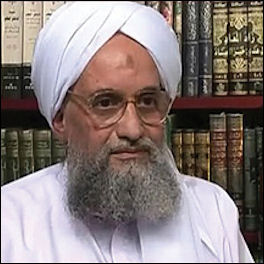
"My connection with Afghanistan began in the summer of 1980 by a twist of fate," Zawahiri wriote in his memoir. He was covering for another doctor at a Muslim Brothers' clinic in Cairo, when the director of the clinic asked if Zawahiri would like to accompany him to Pakistan to tend to the Afghan refugees. Thousands were fleeing across the border as a result of the Soviet invasion, which had begun a few months earlier. Although he had recently got married, Zawahiri writes that he "immediately agreed." He had been preoccupied with the problem of finding a secure base for jihad, which seemed practically impossible in Egypt. "The River Nile runs in its narrow valley between two deserts that have no vegetation or water," he goes on. "Such a terrain made guerrilla warfare in Egypt impossible and, as a result, forced the inhabitants of this valley to submit to the central government and to be exploited as workers and compelled them to be recruited into its army." [Source: Lawrence Wright, The New Yorker, September 16, 2002]
Lawrence Wright wrote in The New Yorker: "Zawahiri travelled to Peshawar with an anesthesiologist and a plastic surgeon. "We were the first three Arabs to arrive there to participate in relief work," he writes. He spent four months in Pakistan, working for the Red Crescent Society, the Islamic arm of the Red Cross. When Zawahiri arrived in Peshawar “it was teeming with arms merchants and opium dealers. Young men from other Muslim countries were beginning to hear the call of jihad, and they came to Peshawar, often with nothing more than a phone number in their pockets, and sometimes without even that. Their goal was to become shaheed — a martyr — and they asked only to be pointed in the direction of the war. Osama bin Laden was one of the first to arrive. He spent much of his time shuttling between Peshawar and Saudi Arabia, raising money for the cause.
The city also had to cope with the influx of uprooted and starving Afghans. By the end of 1980, there were 1.4 million Afghan refugees in Pakistan — a number that nearly doubled the following year — and almost all of them came through Peshawar, seeking shelter in nearby camps. Many of the refugees were casualties of Soviet land mines or of the intensive bombing of towns and cities. The conditions in the clinics and hospitals were appalling. Zawahiri reported home that he sometimes had to use honey to sterilize wounds. He made several trips across the border into Afghanistan. "Tribesmen took Ayman over the border," Omar Azzam told me. He was one of the first outsiders to witness the courage of the Afghan fighters, who were defending themselves on foot or on horseback with First World War carbines. American Stinger missiles would not be delivered until 1986, and Eastern-bloc weapons that the C.I.A. had smuggled in were not yet in the hands of the fighters. But the mujahideen already sensed that they were becoming pawns in the superpowers' game.
Pakistan-Afghanistan border area
That fall, Zawahiri returned to Cairo full of stories about the "miracles" that were taking place in the jihad against the Soviets. When Schleifer called on Zawahiri... he was surprised by his manner. "He started off by saying that the Americans were the real enemy and had to be confronted," Schleifer told me. "I said, 'I don't understand. You just came back from Afghanistan, where you're coöperating with the Americans. Now you're saying America is the enemy?' "
"Sure, we're taking American help to fight the Russians," Zawahiri replied. "But they're equally evil." "How can you make such a comparison?" Schleifer said. "There is more freedom to practice Islam in America than here in Egypt. And in Afghanistan the Soviets closed down fifty thousand mosques!" Schleifer recalls, "The conversation ended on a bad note. In our previous debates, it was always eye to eye, and you could break the tension with a joke. Now I felt that he wasn't talking to me; he was addressing a mass rally of a hundred thousand people. It was all rhetoric."
Zawahiri returned to Pakistan in 1986. Zawahiri returned to Peshawar in 1986. Wright wrote:“Peshawar had changed in the five years since Zawahiri had last been there. The city was congested and rife with corruption. Camels contended in the narrow streets with armored vehicles, pickups with oversized wheels, and late-model luxury cars. As many as two million refugees had flooded into the North-West Frontier Province, turning Peshawar, the capital, into the prime staging area for the resistance. The United States was contributing approximately two hundred and fifty million dollars a year to the war, and the Pakistani intelligence service was distributing arms to the numerous Afghan warlords, who all maintained offices in Peshawar. A new stream of American and Pakistani military advisers had arrived to train the mujahideen. Aid workers and freelance mullahs and intelligence agents from around the world had set up shop.
See Separate Article AYMAN RAI AL-ZAWAHIRI'S LIFE BEFORE AL-QAIDA factsanddetails.com
### Zawahiri and Osama bin Laden
Dr. Ayman al-Zawahiri is believed to have been connected with Osama bin Laden since 1985, when the two men met in Pakistan during the Afghanistan War. Zawahiri is credited by some with making bin-Laden an Islamic radical with a global agenda. Fluent in English, he sometimes acted as an interpreter for bin Laden. Peter Bergen wrote in Vanity Fair: For bin Laden, the slightly older, cerebral Zawahiri must have presented an intriguing figure. Zawahiri had first joined a jihadist group at 15 and had recently served three years in Egypt’s notorious prisons for his jihadist activities. For Zawahiri, bin Laden was on his way to becoming a genuine war hero, and his deep pockets were well known. In 1987, Zawahiri set up his own jihad group, which was soon supported by bin Laden. [Source: Peter Bergen, Vanity Fair, January 2006]
Lawrence Wright, “Each man filled a need on the other. Zawahiri wanted money and contacts...Bin laden, an idealist given to causes, sought direction. Zawahiri, a seasoned propagandist, supplied it...For Zawahiri, bin Laden was a savior — rich and generous, with nearly limitless resources, but also pliable and politically unformed.”
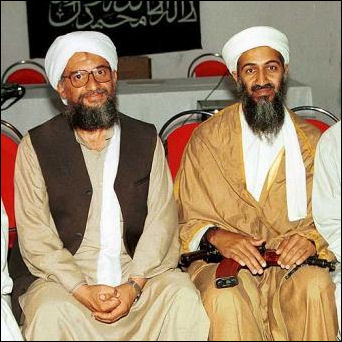
Zawahiri and bin Laden Wright wrote in The New Yorker: “Osama bin Laden, who was based in Jidda, was twenty-eight and had lived a life of boundless wealth and pleasure. His family's company, the multinational and broadly diversified Saudi Binladin Group, was one of the largest companies in the Middle East. Osama was a wan and gangly young man — he is estimated to be six feet five inches — and was by no means perceived to be the charismatic leader he would eventually become. He lacked the underground experience that Zawahiri had and, apart from his religious devotion, had few settled beliefs. But he had been radicalized by the Soviet invasion of Afghanistan in 1979, and he had already raised hundreds of millions of dollars for the mujahideen resistance. [Source: Lawrence Wright, The New Yorker, September 16, 2002]
"Bin Laden had followers, but they weren't organized,"Essam Deraz, an Egyptian filmmaker who made several documentaries about the mujahideen during the Soviet-Afghan war, told Wright. "The people with Zawahiri had extraordinary capabilities — doctors, engineers, soldiers. They had experience in secret work. They knew how to organize themselves and create cells. And they became the leaders." "Bin Laden had an Islamic frame of reference, but he didn't have anything against the Arab regimes," Montasser al-Zayat, an Islamist lawyer told Wright. "When Ayman met bin Laden, he created a revolution inside him."
Deraz observed that bin Laden had become dependent on Zawahiri's medical care. "Bin Laden had low blood pressure, and sometimes he would get dizzy and have to lie down," Deraz told Wright. "Ayman came from Peshawar to treat him. He would give him a checkup and then leave to go fight." Deraz recalls that, during one of the most intense battles of the war, he and the two men were huddled in a cave near Jalalabad with a group of fighters. "The bombing was very heavy," Deraz said. "Bin Laden had his arm stretched out, and Zawahiri was preparing to give him glucose. Whenever the doctor was about to insert the needle, there was a bombing and we would all hit the ground. When the bombing stopped for a while, Zawahiri got up and set up the glucose stand, but as soon as he picked up the bottle there would be another bombing. So one person said, 'Don't you see! Every time you pick up the bottle, we are bombed.' And another said, 'In Islam, it is forbidden to be pessimistic,' but then it happened again. So the pessimistic one got up very slowly and threw the glucose bottle out of the cave. We all laughed. Even bin Laden was laughing."
Zawahiri in the United States
Zawahiri later followed bin Laden to Sudan. Lawrence Wright wrote in The New Yorker: In the early 1990s, Zawahiri entered the United States with a false passport for a brief fund-raising trip. In 1996 he visited Australia to find new recruits and sources of money. Wright wrote in The New Yorker, “Zawahiri decided to look for money in the world center of venture capitalism — Silicon Valley. He had been to America once before, in 1989, when he paid a recruiting visit to the mujahideen's Services Bureau branch office in Brooklyn. According to the F.B.I., he returned in the spring of 1993, this time to Santa Clara, California, where he was greeted by Ali Mohamed, the double agent. Mohamed introduced him to Dr. Ali Zaki, a gynecologist and a prominent civic leader in San Jose. Zaki disputes the F.B.I.'s date of the visit, maintaining that Zawahiri's trip to Silicon Valley took place in 1989, a few years after President Reagan compared the mujahideen to America's founding fathers. People at the F.B.I., however, told me that Zawahiri arrived in America shortly after the first bombing of the World Trade Center. [Source: Lawrence Wright, The New Yorker, September 16, 2002]
“In any event, Zaki claims not to remember much about Zawahiri. "He came as a representative of the Red Crescent of Kuwait," Zaki said. "I was also a physician, so they asked me to accompany him while he was here." He met Zawahiri at the Al-Nur Mosque in Santa Clara after evening prayers, and he escorted him to mosques in Sacramento and Stockton. The two doctors spent most of their time discussing medical problems that Zawahiri encountered in Afghanistan. "We talked about the children and the farmers who were injured and were missing limbs because of all the Russian mines," Zaki recalled. "He was a well-balanced, highly educated physician." But financially the trip was not a success. Zaki says that, at most, the donations produced by these visits to the California mosques amounted to several hundred dollars. Immediately after this dispiriting trip, Zawahiri began working more closely with bin Laden, and most of the Egyptian members of Islamic Jihad went on the Al Qaeda payroll.
“During the early nineties, Zawahiri travelled tirelessly, setting up training camps and establishing cells. During this period, he is reported to have visited the Balkans, Austria, Dagestan, Yemen, Iraq, Iran, the Philippines, and even Argentina, often using a false passport. He was particularly engaged by the war in Bosnia, because the country was home to one of the largest Islamic populations in Europe.
Zawahiri Tries to Assassinate Mubarak in Egypt
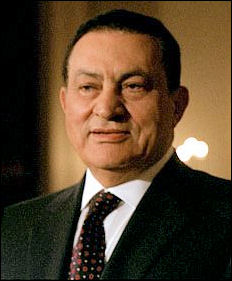
Mubarak Lawrence Wright wrote in The New Yorker: “Sudan seemed an ideal spot from which to launch attacks on Egypt. The active coöperation of Sudan's intelligence agency and its military forces provided a safe harbor for the militants. The long, trackless, and almost entirely unguarded border between the two countries facilitated secret movements; and ancient caravan trails provided convenient routes for smuggling weapons and explosives into Egypt on the backs of camels. Iran supplied many of the weapons, and the Iranian-backed terrorist organization Hezbollah provided training in the use of explosives. [Source: Lawrence Wright, The New Yorker, September 16, 2002]
“Islamic Jihad began its assault on Egypt with an attempt on the life of the Interior Minister, who was leading the crackdown on Islamic militants. In August of 1993, a bomb-laden motorcycle exploded next to the minister's car, killing the bomber and his accomplice. "The minister escaped death, but his arm was broken," Zawahiri writes in his memoir. "A pile of files that he kept next to him saved his life from the shrapnel." The following November, Zawahiri's men tried to kill Egypt's Prime Minister with a car bomb as he was being driven past a girls' school in Cairo. The bomb missed its target, but the explosion injured twenty-one people and killed a twelve-year-old schoolgirl, Shayma Abdel-Halim, who was crushed by a door blown loose in the blast. Her death outraged Egyptians, who had seen more than two hundred and forty people killed by terrorists in the previous two years. As Shayma's coffin was borne through the streets of Cairo people cried, "Terrorism is the enemy of God!"
“Zawahiri was shaken by the popular outrage. "The unintended death of this innocent child pained us all, but we were helpless and we had to fight the government, which was against God's Sharia and supported God's enemies," he notes in his memoir. He offered what amounted to blood money to the girl's family. The Egyptian government arrested two hundred and eighty of his followers; six were eventually given a sentence of death. Zawahiri writes, "This meant that they wanted my daughter, who was two at the time, and the daughters of other colleagues, to be orphans. Who cried or cared for our daughters?"
“Zawahiri was a pioneer in the use of suicide bombers, which became a signature of Jihad assassinations. The strategy broke powerful religious taboos against suicide and the murder of innocents. (For these reasons, the Islamic Group preferred to work with guns and knives.) Although Hezbollah employed truck bombers to attack the American Embassy and the U.S. Marine barracks in Beirut in 1983, such martyrdom operations had not yet worked their way into the modern vocabulary of terror. In Palestine, suicide bombings were virtually unknown until the mid-nineties, when the Oslo accords began to unravel. Another of Zawahiri's innovations was to tape the bomber's vows of martyrdom on the eve of the mission.
Obsessed with secrecy, Zawahiri imposed a blind-cell structure on the Jihad organization, so that members in one group would not know the activities or personnel in another. Thus, a security breach in one cell should not compromise other units, and certainly not the entire organization.
Zawahiri’ Steps Up His Position in Al-Qaida in Afghanistan in the 1990s
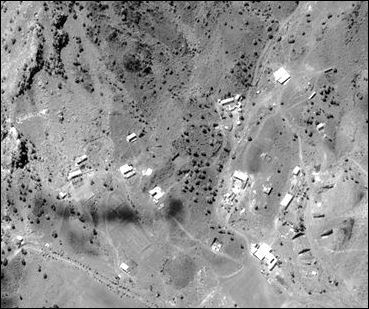
Zhawar Kili Al-Badr Camp
an Al-Qaida camp in Afghanistan Zawahiri and his family joined bin Laden in Jalalabad, a military center in Afghanistan that had become the new headquarters for Al Qaeda. Islamists from all over the world were pouring into the camps that bin Laden had established in the surrounding Hindu Kush mountains. Lawrence Wright wrote in The New Yorker:“Zawahiri formally sealed his new alliance with bin Laden on February 23, 1998, when Zawahiri's name appeared as one of the signatories on a document published in Al-Quds al-Arabi. The document announced the formation of the International Islamic Front for Jihad on the Jews and Crusaders. "In compliance with God's order," the text read, "we issue the following fatwa to all Muslims: the ruling to kill the Americans and their allies — civilian and military — is an individual duty for every Muslim who can do it in any country in which it is possible to do it." Included in the alliance were jihad groups in Afghanistan, Sudan, Saudi Arabia, Somalia, Yemen, Eritrea, Djibouti, Kenya, Pakistan, Bosnia, Croatia, Algeria, Tunisia, Lebanon, the Philippines, Tajikistan, Chechnya, Bangladesh, Kashmir, Azerbaijan, and Palestine. The document gave the West its first glimpse of the worldwide conspiracy that was beginning to form. [Source: Lawrence Wright, The New Yorker, September 16, 2002]
Zawahiri was still active in Islamic Jihad. Many members of Islamic Jihad were wary of bin Laden's designs on the "distant enemy." Zawahiri called a meeting of Islamic Jihad in Afghanistan to explain the new global organization, but there was so much resistance that he threatened to resign. "The members were shocked that their leader joined without asking them," Hany al-Sibai told me. "Only a few, who could be counted on the fingers, supported it." “Zawahiri's continual efforts to maintain a semblance of autonomy ended in June, 2001, when Islamic Jihad and Al Qaeda merged into a single entity, Qaeda al-Jihad. The name reflected the fact that the Egyptians were still in control; indeed, the nine-member leadership council includes only three non-Egyptians — most prominently, bin Laden. Within the organization, the dominance of the Egyptians has been a subject of contention, especially among the Saudis. According to an American investigator, bin Laden has tried to mollify the malcontents by explaining that he can always count on the Egyptians, since they are unable to go home without being arrested; like him, they are men without a country.
Zawahiri’s Input on the African Embassy and USS Cole Attacks

Nairobi Embassy bombing Al-Zawahiri is thought to have helped organize the 2000 suicide bombing of the USS Cole off the coast of Yemen. He is believed to have heavily involved in the planning of the September 11th attacks and the 1998 bombing of the embassy in Kenya and Tanzania.
Lawrence Wright wrote in The New Yorker: “According to officials in the C.I.A. and the F.B.I., Zawahiri has been responsible for much of the planning of the terrorist operations against the United States, from the assault on American soldiers in Somalia in 1993, and the bombings of the American embassies in East Africa in 1998 and of the U.S.S. Cole in Yemen in 2000, to the attacks on the World Trade Center and the Pentagon on September 11th.” [Source: Lawrence Wright, The New Yorker, September 16, 2002]
“The suicide bombings of the American embassies in East Africa were planned and executed, in large part, by Egyptian members of Al Qaeda... On October 12, 2000, Al Qaeda bombed the U.S.S. Cole, one of the Navy's most advanced destroyers, in Aden, Yemen. By now, American intelligence knew enough about Zawahiri to realize that he was in charge of the Yemen cell. He was also closely affiliated with the Saudi terrorist Tawifiq bin Atash, who is now thought to have been the planner of that operation. Moreover, the C.I.A. believes that Atash was one of the chief organizers of the September 11th attacks.”
Zawahiri and Biological and Chemical Weapons
Al-Zawahiri may have been directly involved in Al-Qaida’s biological weapons program. His house in Kabul contained a laboratory with explosives, blasting caps, electronic components and “various solid and liquid substances,” including fine, silvery powders in jars and mysterious liquids in shampoo bottles labeled special medicine. One sample turned up a “positive indicator” for anthrax.
Lawrence Wright wrote in The New Yorker: “As a man of science, Zawahiri was interested in the use of biological and chemical warfare. In a memo from April of 1999, he observed that "the destructive power of these weapons is no less than that of nuclear weapons," and proposed that Islamic Jihad conduct research into biological and chemical agents. "Despite their extreme danger, we only became aware of them when the enemy drew our attention to them by repeatedly expressing concern that they can be produced simply," he noted. He pored over medical journals to research the subject, and he met with an Egyptian scientist in Afghanistan, Medhat Mursi al-Sayed, whose Jihad name was Abu Khabab. [Source: Lawrence Wright, The New Yorker, September 16, 2002]
BpsMH, potential biological weapon “C.I.A. officials believe that Khabab prepared the explosives for the bomb that hit the Egyptian Embassy in Islamabad. Khabab supervised elementary tests of nerve gas; satellite photos purportedly show corpses of dogs scattered about one of the camps near Tora Bora, and Al Qaeda training videos recently acquired by CNN show that poison gas had been tested on dogs. "We knew from hundreds of different sources that Al Qaeda was interested in biological and chemical weapons," says Richard A. Clarke, who was the Clinton Administration's national coördinator for counterterrorism in the National Security Council and is now in charge of cybersecurity for the N.S.C. Clarke told me that in one of the camps human volunteers, wearing protective clothing, were exposed to chemicals in tests similar to ones that the U.S. Army has conducted.
During the invasion of Afghanistan, American forces discovered a factory under construction, near Kandahar, that intelligence officials say was to be used for the production of anthrax. A sample of anthrax powder was reportedly found in Zawahiri's house in Afghanistan. According to reports from Israel and Russia, bin Laden paid Chechen mobsters millions of dollars in cash and heroin to obtain radiological "suitcase" bombs left over from the Soviets. He declared in November, 2001, "We have chemical and nuclear weapons," and vowed to use them "if America used them against us."
Zawahiri and American Intelligence
Lawrence Wright wrote in The New Yorker: “One of Zawahiri's most trusted men was in fact a double agent, named Ali Mohamed. Fluent in English, French, and German, as well as Arabic, Mohamed held both Egyptian and American citizenship. From 1986 to 1989, he served in the U.S. Army as a supply sergeant at the Special Warfare School, at Fort Bragg, North Carolina, where he was commended for his exceptional physical fitness. In 1984, Mohamed approached the C.I.A. in Cairo, and after that meeting the agency sent him to Germany. There he made contact with a Hezbollah cell, but apparently he boasted of his C.I.A. connection, and the agency cut him loose. He then began his association with Islamic Jihad. In 1989, he instructed a group of Islamic militants in Brooklyn in basic combat techniques; four years later, some of these militants bombed the World Trade Center. The same year, Mohamed talked to an F.B.I. agent in California and provided American intelligence with its first inside look at Al Qaeda; inexplicably, that interview never found its way to the F.B.I. investigators in New York. In 1994, he travelled to Khartoum to train bin Laden's bodyguards.[Source: Lawrence Wright, The New Yorker, September 16, 2002]
“Zawahiri's name had been in American intelligence files at least since the Soviet-Afghan war. The F.B.I. became interested in him after the Islamic Jihad bombing of the Egyptian Embassy in Islamabad, but at that point he was still seen as an Egyptian problem. When Zawahiri signed the alliance with bin Laden, in February, 1998, the Bureau opened a file on him. Then came the suicide bombings of the American embassies in East Africa, which were planned and executed, in large part, by Egyptian members of Al Qaeda. American intelligence agencies now realized that there was not just one leader of the organization. They began regarding Zawahiri as an equal partner with bin Laden in the planning and carrying out of the terrorist agenda.
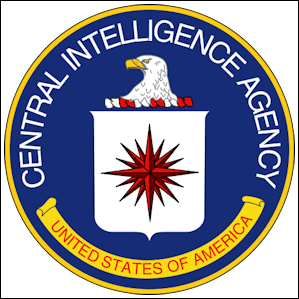
Osama bin Laden declaration in February 1998 that "to kill Americans” was the “duty of every Muslim,” Wright wrote, “prompted a new vigilance in the West. The C.I.A., which had sporadically tried to keep track of Islamic Jihad over the years, acted quickly. In July of 1998, American agents kidnapped Ahmad Salama Mabruk and another member of Jihad outside a restaurant in Baku, Azerbaijan. Mabruk's laptop computer turned out to contain vital information about Jihad members in Europe. The same summer, the C.I.A. moved against an Islamic Jihad cell in Tirana, Albania; the cell, with sixteen members, had been created by Mohammed al-Zawahiri in the early nineties. Albanian agents, under C.I.A. supervision, kidnapped five members of the cell, blindfolded them, interrogated them for several days, and then sent the Egyptian members to Cairo. They were put on trial with more than a hundred other suspected terrorists. Their lawyer, Hafez Abu-Saada, maintains that they were tortured. The ordeal produced twenty thousand pages of confessions, and both Zawahiri brothers were given death sentences in absentia.
As these pieces came together, American intelligence worked more closely with its Egyptian counterparts, and the C.I.A., in conjunction with Egyptian authorities, began to target not just Zawahiri but his brothers. In November, 1999, Mohammed's wife, Aliya, with their five children, surrendered to Egyptian authorities in Yemen, saying that her husband had abandoned them. A few months later, according to Islamist sources, Egyptian intelligence kidnapped Mohammed from the United Arab Emirates and took him back to Cairo, where he "disappeared." According to a source in the C.I.A., American agents came close to apprehending Zawahiri a month before September 11th, when he travelled to Yemen for medical treatments. "The Egyptian intelligence service briefed us that he was in a hospital in Sanaa," the person told me. "We sent a few people over there, and they made a colossal screwup. While our guys were conducting a surveillance of the hospital, the guards caught them with their videocameras." The plan was compromised, and Zawahiri returned to Afghanistan.
After 9/11: Zawahiri’s Family Killled as He Escapes
Lawrence Wright wrote in The New Yorker: “On September 11th, Zawahiri, bin Laden, and their followers evacuated their quarters in Kandahar and fled into the mountains, where they listened to an Arabic radio station's news flashes about the attacks on the World Trade Center and the Pentagon. According to a C.I.A. report about the events of that morning, at 9:53 A.M., between the crash of American Airlines Flight 77 into the Pentagon and the downing of United Airlines Flight 93 in Pennsylvania, a member of Al Qaeda in Afghanistan was overheard saying that the attackers were following through on "the doctor's program." [Source: Lawrence Wright, The New Yorker, September 16, 2002]
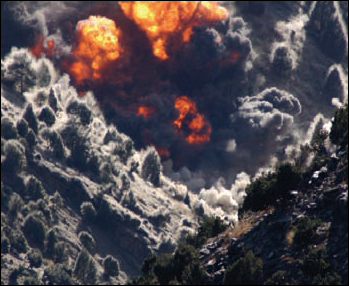
U.S air strikes on Al-Qaida caves “On December 3rd, American bombers struck a heavily fortified complex of caves near Jalalabad. When the ground troops arrived, they discovered more than a hundred bodies, and they were able to identify eighteen of them as top Al Qaeda lieutenants. Zawahiri's wife, Azza, and their children were also said to have been killed, but, according to the F.B.I., there is no confirming evidence of this.
In March 2002, Lawrence Wright wrote in The New Yorker, “a band of horsemen journeyed through the province of Paktika, in Afghanistan, near the Pakistan border. Predator drones were circling the skies and American troops were sweeping through the mountains. The war had begun six months earlier, and by now the fighting had narrowed down to the ragged eastern edge of the country. Regional warlords had been bought off, the borders supposedly sealed. For twelve days, American and coalition forces had been bombing the nearby Shah-e-Kot Valley and systematically destroying the cave complexes in the Al Qaeda stronghold. And yet the horsemen were riding unhindered toward Pakistan. [Source: Lawrence Wright, The New Yorker, September 16, 2002]
“They came to the village of a local militia commander named Gula Jan, whose long beard and black turban might have signalled that he was a Taliban sympathizer. "I saw a heavy, older man, an Arab, who wore dark glasses and had a white turban," Jan told Ilene Prusher, of the Christian Science Monitor, four days later. "He was dressed like an Afghan, but he had a beautiful coat, and he was with two other Arabs who had masks on." The man in the beautiful coat dismounted and began talking in a polite and humorous manner. He asked Jan and an Afghan companion about the location of American and Northern Alliance troops. "We are afraid we will encounter them," he said. "Show us the right way."

Navy SEALS checking Al-Qaida cave “While the men were talking, Jan slipped away to examine a poster that had been dropped into the area by American airplanes. It showed a photograph of a man in a white turban and glasses. His face was broad and meaty, with a strong, prominent nose and full lips. His untrimmed beard was gray at the temples and ran in milky streaks below his chin. On his high forehead, framed by the swaths of his turban, was a darkened callus formed by many hours of prayerful prostration. His eyes reflected the sort of decisiveness one might expect in a medical man, but they also showed a measure of serenity that seemed oddly out of place. Jan was looking at a wanted poster for a man named Dr. Ayman al-Zawahiri, who had a price of twenty-five million dollars on his head.
“Jan returned to the conversation. The man he now believed to be Zawahiri said to him, "May God bless you and keep you from the enemies of Islam. Try not to tell them where we came from and where we are going." There was a telephone number on the wanted poster, but Gula Jan did not have a phone. Zawahiri and the masked Arabs disappeared into the mountains.”
Al-Zawahiri Takes Control of Al-Qaida After September 11th
After September 11th Zawahiri has worked to rebuild Al-Qaida’s leadership in the Afghan-Pakistan border tribal areas. Since then Al Qaeda has inspired or had a direct hand in attacks in North Africa, Saudi Arabia, Yemen, Pakistan, the 2004 train bombings in Madrid and the 2005 transit bombings in London. Bruce Hoffman wrote in the Washington Post: “Zawahiri charted a way forward for al-Qaeda in late 2001, when it was widely believed to be on the brink of annihilation. Despite the deaths of his wife and only son in a U.S. airstrike in Afghanistan..he did not repine. Even while on the run from CIA and U.S. Special Operations forces and the Afghan Northern Alliance, he came up with an uncompromisingly bellicose yet crystal-clear blueprint for al-Qaeda's revival. [Source: Bruce Hoffman, Washington Post, September 9, 2007]
As Osama bin Laden retreated into hiding Zawahiri more and more became the front man for Al-Qaida. Peter Bergen wrote in Time in 2006: “In the past year or so, al-Zawahiri, 54, has increasingly become the public face and voice of al-Qaeda while bin Laden has ceded the spotlight to his deputy.It was al-Zawahiri who wrote a letter to al-Qaeda's leader in Iraq, Abu Mousab al-Zarqawi, gently suggesting that he stop his habit of beheading hostages because it was turning off many Muslims. In recent months al-Zarqawi has stopped the beheadings. Following the 9/11 attacks, bin Laden released more than 15 audio- and videotapes. But recently he has sharply cut back, releasing only two tapes since December 2004, apparently fearing the U.S. could locate him by tracing back a tape's chain of custody. Meanwhile, al-Zawahiri has released seven tapes. His high profile may account for the Jan. 13 U.S. missile strike on the Afghanistan-Pakistan border aimed at killing him. The attack killed four al-Qaeda members but not al-Zawahiri, who appeared on videotape two weeks later, taunting President Bush and defiantly proclaiming himself alive. [Source: Peter Bergen, Time, April 30, 2006]
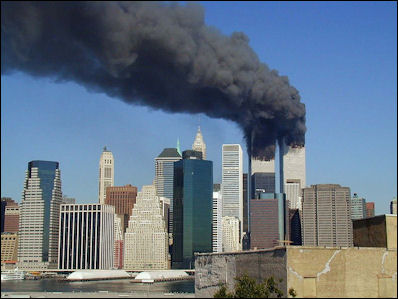
In a treatise, published in the London-based Arabic-language newspaper Alsharq al-Awsat in December 2001 and titled "Knights Under the Prophet's Banner," Zawahiri described Islam as being attacked on all sides by the predatory and corrupt Western world and argued "there is no solution without jihad." He called for: 1) The need to inflict maximum casualties on the opponent, no matter how much time and effort such operations take, for this is the language understood by the West. 2) The need to concentrate on martyrdom operations as the most successful way to inflict damage and the least costly in casualties to the mujaheddin.[Source: Bruce Hoffman, Washington Post, September 9, 2007. Hoffman is a professor of security studies at Georgetown University]
Hoffman wrote in the Washington Post: “The U.S. invasion of Iraq presented al-Qaeda with the opportunity to put his arguments into practice. As long ago as the second anniversary of the 9/11 attacks, Zawahiri had explained al-Qaeda's strategy in response to what he was already decrying as a repressive U.S.-led occupation. "We thank God," he declared in September 2003, "for appeasing us with the dilemmas in Iraq and Afghanistan. The Americans are facing a delicate situation in both countries. If they withdraw, they will lose everything, and if they stay, they will continue to bleed to death." Sure enough, what U.S. military commanders had optimistically described four years ago as the jihadist "magnet" or "flytrap" designed to capture al-Qaeda terrorists in Iraq was having precisely the opposite effect, according to Zawahiri's plan: It was enmeshing the U.S. military in a debilitating war of attrition.”
Zawahiri, Jews and the Brains Behind Al-Qaida
Some think Al-Zawahiri was real brains behind Al-Qaida not bin Laden. Bruce Hoffman wrote in the Washington Post: “He may lack bin Laden's charisma, but Zawahiri is the superior strategist. It was he who defined al-Qaeda's strategy in terms of "far" and "near" enemies. The United States is the "far enemy" whose defeat, he argued, was an essential prerequisite to the elimination of the "near enemy" — the corrupt and authoritarian anti-Islamic regimes in the Middle East, Central Asia, South Asia and Southeast Asia that could not remain in power without U.S. support. Zawahiri's strategic vision set off the chain of events that led to 9/11. [Source: Bruce Hoffman, Washington Post, September 9, 2007]
Peter Bergen disagrees. He wrote in the Washington Post: “In making the most important strategic shift in al-Qaeda’s history — identifying the United States as its key enemy, rather than Middle Eastern regimes — bin Laden brushed aside Zawahiri’s obsessive focus on overthrowing the Egyptian government. Noman Benotman, a Libyan militant who has spent considerable time talking with both of al-Qaeda’s leaders, told me in an interview that “Osama influenced Zawahiri with his idea: Forget about the “near enemy”; the main enemy is the Americans.” Bin Laden also kept Zawahiri in the dark for years about al-Qaeda’s most important operation — the planning for the 9/11 attacks — cluing in his deputy only during the summer of 2001. [Source: Peter Bergen, Washington Post, May 6, 2011]
Lawrence Wright wrote in The New Yorker: “In 1998, Zawahiri commissioned a study on the Jewish influence in America. As a result of the study, Islamic Jihad formally placed the United States on its list of acceptable targets. Bin Laden was sufficiently pleased to raise the organization's annual budget from three hundred thousand dollars to five hundred thousand. "America is now controlled by the Jews, completely, as are its news, its elections, its economy, and its politics," Zawahiri explained in the Jihad journal, Al-Mujahidoun, later that year. "It uses Israel to attack its neighbors and to slaughter those who are living peacefully there. . . . If we are a nation of martyrs — as we claim — all that we need is courage of heart and the will of killers and the belief in what we claim to be love of death for Allah's sake. That is the key to our triumph and the beginning of their defeat. If you want to live as free people and to die in honor and be sent as martyrs, the road in front of you is clear." [Source: Lawrence Wright, The New Yorker, September 16, 2002]
In a 2001 treatise, Zawahiri set down the long-term strategy for the jihadi movement — to inflict "as many casualties as possible" on the Americans. "Pursuing the Americans and Jews is not an impossible task," he wrote. "Killing them is not impossible, whether by a bullet, a knife stab, a bomb or a strike with an iron bar." Al-Zawahiri's hatred for Americans became more persona after September 11th: His wife and at least two of their six children were killed in a U.S. airstrike following the 2001 U.S. invasion of Afghanistan after the 9-11 attacks. [Source: AP]
Al-Zawahiri and the Media
Craig Whitlock wrote in the Washington Post: “In contrast to the charismatic bin Laden, who speaks in poetic Arabic and projects the image of a statesman, Zawahiri is an uncompromising pedant who tailors his messages to other radicals. He defends al-Qaeda's brutal tactics unflinchingly, justifying the killing of civilians by invoking a greater struggle against nonbelievers and corrupt Arab regimes. "He resonates with the militants because he gives them tightly constructed Islamist arguments," S. Abdallah Schleifer, a former NBC News bureau chief in Cairo who has known Zawahiri and his family for decades, told the Washington Post. "He's offering them a patterned, ideological take on life." [Source: Craig Whitlock, Washington Post, June 24, 2008]
“Some U.S. officials and analysts have questioned whether Zawahiri has become overexposed and whether his message is losing its bite. They point to surveys showing a plunge in public support for al-Qaeda, particularly in countries where the network has organized attacks against Muslim civilians, such as Jordan, Pakistan and Indonesia. But others warn against underestimating Zawahiri's skill at keeping the debate focused on U.S. policy in the Middle East, a subject that strikes a chord with millions of Muslims, even those otherwise unsympathetic to al-Qaeda.”
Perhaps his most effective video, they said, is an 80-minute documentary released in September 2007 titled "The Power of Truth." In the film, Zawahiri and other al-Qaeda leaders offer a long narrative of alleged offenses by the U.S. government against Muslims, using video excerpts of U.S. leaders and commentators to bolster their argument. "It's beautifully crafted propaganda, and it's a huge problem for us," said Jarret Brachman, research director at the Combating Terrorism Center at the U.S. Military Academy at West Point, N.Y. "You're left shaking your head and saying, 'Yeah, I guess they're right.' "
After September 11th, every few months Zawahiri released a video or an audio tape with some kind of jihadist or anti-American rant, often encourging Muslims to kill Americans. He also took the time to criticize elections in the Palestinian territories and mock Bush and Obama. Blaming the Jews for a host of problems and explaining how they controlled everything were topic close to his heart. Zawahiri issued more tapes after September 11th than Osama bin Laden. Between January 2007 and June 2008 Zawahiri, appeared in 20 different videos and audio tapes, according to IntelCenter, a terrorism research firm. As was the case with bin Laden messages to the world Zawahiri’s video and audio tapes were usually first broadcast on the Arabic-language television station Al-Jazeera or Al-Arabiya and dated by intelligence experts using events mentioned in the tapes and given voice analysis to determine their authenticity.
Zawahiri spoke out on a wide range of issues: the Israeli-Palestinian conflict, the war in Iraq, soil in Saudi Arabia, the shortcomings of democracy, America’s devious plans, and the fine points of the Muslim religion. Some feel by releasing so many tapes and offering his views on so many topics he was trying to usurp Osama bin Laden’s leadership of Al-Qaida or at least play the role of a hands-on leader while bin Laden was its spiritual figurehead.
Zawahiri made his share of threats. In May 2003, he called for a repeat of the September 11th attacks and singled out Norway for some reason as a target for attacks. In September 2003, he urged Pakistanis to overthrow Pakistan leader Gen. Pervez Musharraf for his support of the United States (this was followed up by two assassination attempts of Musharraf). When the Abu Ghraib prison abuse scandal and the Danish cartoon controversy surfaced he used them opportunities to slam the West..In one tape al-Zawahiri referred to U.S. President Obama as a “house Negro,” an insult for a black subservient to whites. After Obama was elected al-Zawahiri taunted him, saying: “Be aware that the dogs of Afghanistan have found the flesh of your soldiers to be delicious, so send thousands after thousands of them...America has put on a new face but its heart is full of hate.”
Attempts to Capture and Kill Zawahiri
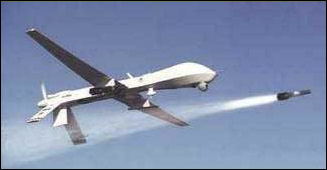
Lawrence Wright wrote in The New Yorker: According to a source in the C.I.A., American agents came close to apprehending Zawahiri a month before September 11th, when he travelled to Yemen for medical treatments. "The Egyptian intelligence service briefed us that he was in a hospital in Sanaa," the person told me. "We sent a few people over there, and they made a colossal screwup. While our guys were conducting a surveillance of the hospital, the guards caught them with their videocameras." The plan was compromised, and Zawahiri returned to Afghanistan. [Source: Lawrence Wright, The New Yorker, September 16, 2002]
In 1996 “Zawahiri and two of his top lieutenants, Ahmad Salama Mabruk and Mahmud Hisham al-Hennawi, crossed into the Russian province of Dagestan, they were arrested for entering the country illegally. The Russians discovered, among other documents, false identity papers, including a Sudanese passport that Zawahiri sometimes used. Zawahiri's passport indicated that he had been to Yemen four times, Malaysia three times, Singapore twice, and China (probably Taiwan) once — all within the previous twenty months. At the trial, in April, 1997, Zawahiri insisted that he had come to Russia "to find out the price for leather, medicine, and other goods." He said he was unaware that he was crossing the border illegally. The judge sentenced the three men to six months in jail. They had nearly completed the term by the time of the trial, and the following month they were released. "God blinded them to our identities," Zawahiri boasted in the account of his trip.
There were reports that Dr. Al-Zawahiri’s died in a U.S. bombing raid in 2002 but these turned out to be untrue. The CIA came close to capturing Zawahiri him in 2003 and killing him in 2004 and 2006 — all three times in Pakistan. In December 2009, the CIA thought it was again close only to be tricked by a double agent who blew himself up, killing seven agency employees and wounding six more in Khost, Afghanistan.
In January 2006, a house in Damadola — a remote Pakistani village near the Afghanistan border, where a high-level Al-Qaida meeting was reportedly taking place — was struck with a Hellfire missile fired from a Predator drone. Zawahri was thought to be at the meeting. He was the primary target. But he wasn’t there. Thirteen villagers were killed. Among the Al-Qaida members that were killed were four or five top lieutenants, including: 1) Abdul Rahman Al-Magrebhi, an al-Zawahiri son in law and Al-Qaida PR man; 2) Abu Ubayda al-Misri, an Al-Qaida commander in Afghanistan; and 3) Khalid Habib, an Al-Qaida operations chief tied to attacks on American troops and the two assassination attempts of Pakistan President Musharaf. Some regarded Khalid Habib as the No. 3 man in Al-Qaida. Midhat Mursi al-Sayid, an explosives and chemical weapons expert with a $5 million price on his head, was initially reported killed but that turned out not to be true. Thousands of Pakistanis took to the streets to protest the attack, including more than 1,000 in Peshawar, to protest the killing of the civilians.
Aborted Plan to Kill Zawahiri in 2005 Using Parasailing SEALs
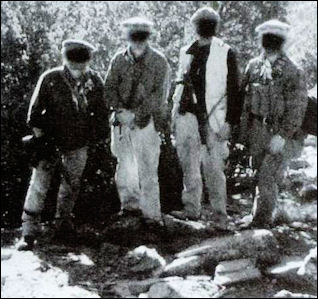
“In late 2005, Newsweek reported, “the CIA and the Pentagon's Joint Special Operations Command came up with intelligence that gave them "80 percent confidence" that either Zawahiri, bin Laden's longtime sidekick, or another of bin Laden's highest-ranking lieutenants would be attending a meeting in a small compound just inside Pakistan along its northern border with Afghanistan. "This was the best intelligence picture we had ever seen" about a so-called HVT [High-Value Target], said a former intelligence official who was involved in the operation. [Source: Newsweek, Reported by Ron Moreau and Sami Yousafzai on the Afghanistan-Pakistan border; Zahid Hussain in Islamabad; Rod Nordland in Tora Bora; Mark Hosenball, Michael Hirsh, Michael Isikoff, John Barry, Dan Ephron and Eve Conant in Washington; Christopher Dickey in Paris, and Roya Wolverson in New York. Written by Evan Thomas. September 3, 2007]
“The spooks and Special Operations Forces planned an airborne commando raid that could have been produced by Jerry Bruckheimer. Some 30 U.S. Navy SEALs were to be flown by C-130 transport planes, under cover of darkness, to a spot high above the Afghan side of the Pakistan border, about 30 to 40 miles away from the target. The SEALs would jump from the plane and use parasails — motorized hang gliders — to fly through the night sky, across the mountains, to a secret staging point close to the compound. They would attack the target and capture Zawahiri or whatever other HVTs were on the premises, killing them only if necessary. The SEALs would then spirit their captives away to another staging point, where two CH-53 helicopters awaited to airlift them back to Afghanistan.
“The plan was initially enthusiastically endorsed by the then CIA Director Porter Goss and JSOC Commander Stanley McChrystal, who was a major at the time. But when the Pentagon's civilian leadership, including Rumsfeld and his principal intelligence adviser, But over time “To Rumsfeld, the operations began to seem more and more like an invasion of Pakistan. Musharraf would have to be consulted, or at least informed. But did that mean his unreliable intelligence service, the ISI, would leak the plan to Al Qaeda? The official close to Rumsfeld says that the SecDef became increasingly wary as he weighed potential risk against reward But time was of the essence. The C-130s were circling over the border, the SEALs were ready to jump, while Rumsfeld was still deliberating with the top brass. CIA Director Goss went to the Pentagon to implore him to go ahead. At the last minute Rumsfeld called off the raid. "
Zawahiri Becomes Al-Qaida Leader After Osama bin Laden’s Death
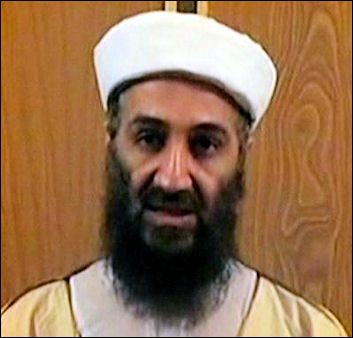
After Osama bin Laden’s death Zawahiri seemed like the most likely person to become head of Al-Qaida but there were some doubts. An official announcement was slow in coming. In mid June about six weeks after Osama bin Laden was killed Al-Qaida issued a statement posted on militant websites that read: “The general command of Al Qaeda, after completing consultations, decided that the sheik doctor Abu Mohammed Ayman al-Zawahiri, may God give him success, has assumed responsibility for command of the group." [Source: AP, June 16, 2011]
In a videotape released a few days earlier Zawahiri warned that America faced an international community of Muslims that seek to destroy it. "Today, praise God, America is not facing an individual, a group or a faction," he said, wearing a white robe and turban with an assault rifle leaned on a wall behind him. "It is facing a nation that is in revolt, having risen from its lethargy to a renaissance of jihad." Al-Zawahiri praised bin Laden and criticized the U.S. for burying him at sea after he was killed by U.S. Navy SEALs in a raid on his house in Pakistan. "He went to his God as a martyr, the man who terrified America while alive and terrifies it in death, so much so that they trembled at the idea of his having a tomb," he said.
AP reported: The statement announcing his succession was filled with the terror network's usual rhetoric, vowing to continue the fight against what it called "conquering infidels, led by America and its stooge Israel, who attack the homes of Islam." The Al Qaeda statement also stated the group's support for the “Arab Spring” popular uprisings in the Middle East and North Africa. It vowed never to recognize the legitimacy of Israel and to support what it called the struggle of the Afghan people under the leadership of Taliban commander Mullah Omar against American occupation. "We support the uprisings of oppressed Muslim nations in the face of corrupt and oppressive tyrants in Tunisia, Egypt, Yemen, Syria and Morocco and we encourage them along with the rest of the Muslim people to continue the struggle until all the corrupt oppressive regimes imposed by the west are removed," it said.
Peter Bergen wrote in the Washington Post: “Al-Qaeda’s regional affiliates “al-Qaeda in Iraq, the North African al-Qaeda in the Islamic Maghreb, al-Qaeda in the Arabian Peninsula and Somalia’s al-Shabab — all pledged allegiance to bin Laden when they became part of the network. And while al-Qaeda in Iraq swore loyalty to Zawahiri in a May 9 statement, the others may not agree to shift their fealty to him. [Source: Peter Bergen, Washington Post , June 17, 2011]
Zawahiri as Al-Qaida Leader
Greg Miller wrote in the Washington Post: “U.S. officials said that Zawahiri is a more pragmatic leader than his predecessor, with a firmer grasp of the ground-level difficulties faced by the organization’s estimated few hundred remaining followers in Pakistan. With no merger partners or other prospects for a short-term infusion, Zawahiri appears to have settled on a strategy of buying time. In his latest video message, he appeals to followers for continued loyalty by calling more attention to bin Laden’s magnetism than any of his own leadership attributes. [Source: Greg Miller, Washington Post, November 22, 2011]
In the 30-minute recording, titled “Days with the Imam,” Zawahiri — who has been described as an abrasive figure lacking his predecessor’s charisma — recounts his experiences with bin Laden in a message that is more nostalgic than militant in tone. U.S. officials said the video may reflect Zawahiri’s awareness of his own shortcomings. “If he has an accurate measure of his own popularity, he would realize he’s the wrong man for the job,” said the senior U.S. counterterrorism official. “Most of the organization has complained about him.”
For that reason, much of the pressure of rebuilding may fall to his lieutenant, Libi, who is considered a more dynamic figure, a religious scholar who escaped from U.S. detention before beginning his rapid rise through al-Qaeda’s depleted ranks. Although Zawahiri and Libi have long been top targets of the CIA, the agency’s pursuit has intensified as other names have been crossed off the agency’s kill list. Among them was Atiyah abd al-Rahman, who communicated regularly with bin Laden, rose to No. 2 in the organization and served as its day-to-day operational chief until he was killed in an August drone strike.
Reuters reported: Defense Secretary Robert Gates said Zawahri does not have the "peculiar charisma" and operational experience of bin Laden. But Gates and other U.S. officials said al Qaeda remains a threat despite losing bin Laden. "We should be mindful that ... al Qaeda seeks to perpetuate itself, seeks to find replacements to those that have been killed and remains committed to the agenda that bin Laden put before them," Gates told reporters. [Source: Sara Anabtawi, Reuters. June 16, 2011]
Daniel Markey, South Asia expert at the Council on Foreign Relations in Washington, described Zawahri as a "more divisive leader" compared with bin Laden's more "spiritual" profile. "Zawahri comes across as the more politically minded," and his background from Egypt means he had different relationships within the organization, he told Reuters. "There was a reason why he was number two. He is a lesser figure," Markey said. "However, in terms of being every bit as militant and eager to demonstrate al Qaeda's continued significance as a terrorist organization, we should expect that. And if anything, I would imagine that he would be inclined to demonstrate that al Qaeda is still alive and kicking."
"He is an able person," Pakistani Taliban spokesman Ehsanullah Ehsan said by telephone from an undisclosed location. "We have been cooperating with al Qaeda in the past and that cooperation will continue in future," he told Reuters. "So I think he's (Zawahri's) got some challenges but I think it's a reminder that they are still out there and we still need to keep after them," he said.
Al-Zawahir Appears in 9/11 Anniversary Video in 2021 After Being Rumored Dead
In September 2021, al-Zawahiri appeared in a video released on the 20th anniversary of the 9/11 attacks following rumors that he had died. The Times of Israel reported: al-Zawahiri speaks of ‘Judaization of Jerusalem,’ mentions US withdrawal from Afghanistan, but not Taliban takeover — suggesting the footage may not be recent. [Source: Times of Israel, Agencies, September 12, 2021]
SITE Intelligence Group, which tracks the online activity of jihadist groups, reported that in a video released by al-Qaeda, al-Zawahiri spoke on a number of subjects. Al-Zawahiri made references to a raid on a Russian military base by the al-Qaeda-linked Hurras al-Deen group in Syria, which it claimed on January 1, 2021. Al-Zawahiri also talked about the United States withdrawal from Afghanistan, but Katz pointed out that it could have been said long ago following the signing of the Doha Agreement, in which the US pledged to remove its troops from the country. Thus, he could still be dead, though if so, would have been at some point in or after Jan 2021.
Image Sources: Wikimedia Commons except bin Laden in the 1980s, Time, bin Laden and Zawahiri, Redshirt Alignment blog
Text Sources: New York Times, Washington Post, Los Angeles Times, Times of London, The Guardian, National Geographic, The New Yorker, Time, Newsweek, Reuters, AP, AFP, Wall Street Journal, The Atlantic Monthly, The Economist, Global Viewpoint (Christian Science Monitor), Foreign Policy, Wikipedia, BBC, CNN, NBC News, Fox News and various books and other publications.
Last updated March 2022


